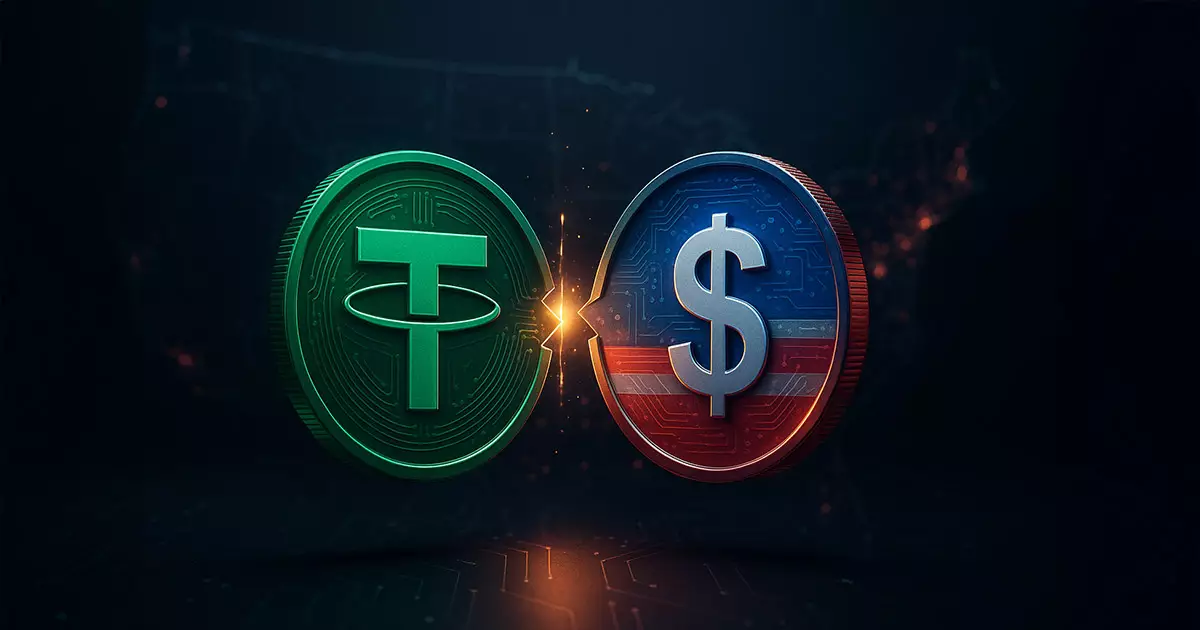In an era consumed by burgeoning financial technologies and cryptocurrency, Tether has ignited discussions about the future of stablecoins in the United States. CEO Paolo Ardoino recently disclosed the company’s readiness to introduce a U.S.-specific stablecoin, as legislation surrounding digital currencies takes shape. The Guiding and Establishing National Innovation for US Stablecoins Act, dubbed the GENIUS Act, promises to lay the groundwork for what could be a seismic shift in how American consumers engage with their finances. Rather than only propagating its existing offering, USDT, to emerging markets, Tether seems poised to tailor its strategy to cater specifically to American users.
Focusing on Emergent Economies
While many industries find themselves laden with regulations and established norms, it is these very constraints that allow Tether to carve its niche. The company has rightly positioned USDT as an essential currency for unbanked individuals primarily in Sub-Saharan Africa and parts of Asia. Ardoino’s acknowledgment that approximately 1.4 billion adults remain without access to traditional banking systems underscores a critical reality: the underserved population craves financial stability, which USDT partly offers. This demographic relies heavily on digital assets to combat local currency devaluations, showcasing the tremendous potential for cryptocurrencies to bridge economic disparities.
Tether’s commitment to these emerging markets is commendable, but this unwavering focus raises a question: Can Tether effectively serve the unique needs of the U.S. market? The deployment of a domestically issued stablecoin could be the crucial step Tether requires to cement its position as a multifaceted financial player.
The Unique Needs of the U.S. Market
The peculiarities of the American financial ecosystem necessitate a different approach than Tether’s current offerings. According to Ardoino, the U.S. is saturated with various payment methods, which dilutes the potential efficacy of stablecoins for routine transactions. While USDT has proven useful for remittances and currency preservation in less stable economies, American consumers face other challenges. They demand more functions from their stablecoins, such as enhanced security features, integration with payment platforms, and adaptability in digital transactions.
Tether’s introduction of a domestic stablecoin could create a product that resonates with American consumers. However, it must be competitive in its offerings—functionality, user experience, and security all must be top-notch. Given the existing competition among stablecoin players, failure to innovate could spell disaster for Tether’s ambitious plans.
Regulatory Framework and Compliance
Paolo Ardoino has been vocal about the importance of regulatory clarity surrounding the GENIUS Act. The recent developments suggest a growing recognition of the need for a clearly defined regulatory environment, as ambiguous rules can stifle innovation rather than nurture it. Ardoino’s concerns about Europe’s MiCA regulation signal a broader apprehension regarding compliance and operational mandates that can hinder true growth in the crypto space.
By aligning Tether’s U.S.-denominated stablecoin with the requirements of the GENIUS Act, Ardoino aims to carve a regulatory pathway that could incentivize users while promoting stability. The 100% cash reserve requirement proposed by the GENIUS Act is a promising step in ensuring consumers’ trust in the system—a vital currency amidst volatile financial landscapes.
Potential Roadblocks and Challenges Ahead
While Tether’s enthusiasm for rolling out a domestic stablecoin is palpable, the company must navigate various potential pitfalls. The competitive landscape isn’t just crowded; it’s continuously evolving. Other established financial institutions are also looking into launching their own digital currencies, and none can afford to underestimate the tech-savvy U.S. consumer.
Moreover, as evidenced by Ardoino’s focus on the risks of regulatory compliance, any delays or unforeseen complications in the legislative process could jeopardize Tether’s plans. The ultimate success or failure of a domestically issued Tether stablecoin hinges on swift legislative action as well as speed to market.
In a rapidly changing financial environment, Tether’s readiness to innovate could either position it as a leader or highlight its struggles against emerging challengers. The impending models it plans to unveil could indeed revolutionize how we engage with digital currencies in America, but only if they can navigate the intricate web of demand, regulation, and competition effectively.


Leave a Reply